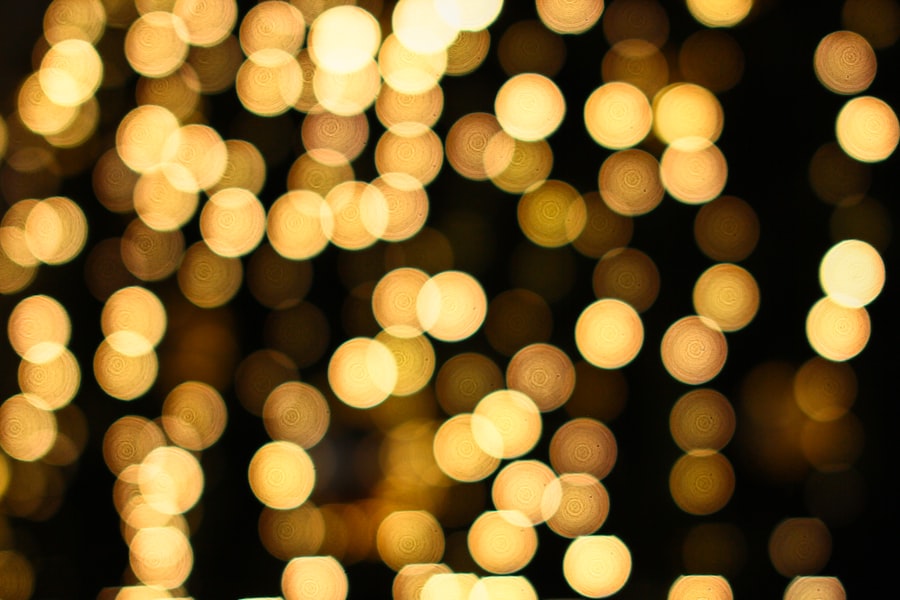Light is a fundamental component of plant growth, serving as the primary energy source for photosynthesis, the process by which plants convert light energy into chemical energy. This transformation is crucial for the survival of plants and, by extension, all life on Earth, as it forms the basis of the food chain. Plants utilize light to synthesize glucose from carbon dioxide and water, releasing oxygen as a byproduct.
The spectrum of light that plants absorb is not uniform; different wavelengths have distinct effects on various physiological processes. The role of light extends beyond mere energy provision; it also influences plant morphology, growth rates, flowering, and fruiting. Plants have evolved to respond to light in sophisticated ways, utilizing photoreceptors that detect specific wavelengths.
These responses can trigger a cascade of hormonal changes that affect growth patterns and developmental stages. For instance, the presence of light can stimulate seed germination, while the absence of it can signal dormancy. Understanding how plants interact with light is essential for optimizing growth conditions in both natural and controlled environments.
Key Takeaways
- Light plays a crucial role in plant growth and development, influencing processes such as photosynthesis, flowering, and fruit production.
- Red light is essential for photosynthesis and promotes flowering and fruit production in plants.
- Blue light is important for plant growth and development, influencing factors such as morphology, leaf development, and nutrient uptake.
- Red light and blue light have different effects on plant growth, with red light promoting flowering and fruit production, and blue light influencing morphology and leaf development.
- Utilizing red and blue light in controlled environment agriculture can optimize plant growth and health, and choosing the right light color for different growth stages is crucial for achieving optimal results.
The Importance of Red Light in Photosynthesis
Red light, which falls within the wavelength range of approximately 620 to 750 nanometers, plays a pivotal role in photosynthesis. It is particularly effective in driving the photosynthetic process because chlorophyll, the green pigment responsible for capturing light energy, absorbs red wavelengths efficiently. This absorption leads to the excitation of electrons within chlorophyll molecules, facilitating the conversion of light energy into chemical energy stored in glucose molecules.
In addition to its role in photosynthesis, red light influences various growth processes. For example, it promotes stem elongation and leaf expansion, allowing plants to reach for more light. Furthermore, red light is crucial for regulating photoperiodism—the response of plants to the length of day and night—which affects flowering and fruiting cycles.
Many flowering plants require specific durations of red light exposure to trigger blooming, making it an essential factor in horticulture and agriculture.
The Role of Blue Light in Plant Growth and Development

Blue light, with wavelengths ranging from about 450 to 495 nanometers, is another critical component of the light spectrum that significantly impacts plant growth and development. Unlike red light, blue light is primarily responsible for regulating plant morphology. It influences leaf expansion, stem thickness, and overall plant architecture.
When plants are exposed to blue light, they tend to develop shorter internodes and thicker stems, resulting in a more compact growth form that can be advantageous in crowded environments. Moreover, blue light plays a vital role in the process of phototropism—the directional growth of plants in response to light. Plants will bend towards blue light sources, optimizing their exposure to this essential wavelength for photosynthesis.
Additionally, blue light is crucial for the synthesis of chlorophyll and other pigments that are necessary for photosynthesis and overall plant health. The presence of blue light can enhance the efficiency of photosynthesis by promoting chloroplast development and increasing the rate of carbon fixation.
Comparing the Effects of Red Light and Blue Light on Plant Growth
When comparing the effects of red light and blue light on plant growth, it becomes evident that each wavelength serves distinct yet complementary roles. Red light is primarily associated with promoting flowering and fruiting, while blue light is more influential in shaping plant structure and optimizing photosynthetic efficiency. For instance, studies have shown that plants grown under red-dominant light conditions tend to exhibit elongated stems and larger leaves, which can be beneficial for maximizing light capture but may also lead to weaker structural integrity.
Conversely, plants exposed predominantly to blue light develop a more robust architecture with shorter stems and thicker leaves. This structural adaptation allows them to withstand environmental stresses better and compete effectively for resources. However, an exclusive reliance on blue light can hinder flowering and fruit production due to insufficient red light exposure.
Therefore, a balanced approach that incorporates both red and blue wavelengths is essential for achieving optimal growth across various plant species.
The Impact of Red Light on Flowering and Fruit Production
Red light’s influence on flowering and fruit production is particularly pronounced in many plant species that rely on specific photoperiods to trigger these developmental stages. For example, short-day plants require longer periods of darkness interspersed with red light exposure to initiate flowering. Conversely, long-day plants thrive under extended daylight hours enriched with red wavelengths.
This sensitivity to red light is mediated by phytochromes—photoreceptors that detect changes in light quality and quantity. In addition to initiating flowering, red light also enhances fruit set and development. Research has demonstrated that fruits exposed to adequate levels of red light during their development exhibit improved size, color, and flavor profiles.
This effect is particularly important in commercial horticulture, where growers aim to maximize yield and quality. By manipulating light conditions in controlled environments such as greenhouses or indoor farms, producers can optimize red light exposure during critical growth phases to enhance overall productivity.
How Blue Light Affects Plant Morphology and Leaf Development

Blue light has a profound and multifaceted impact on plant morphology.
### Compact Growth Forms
When plants receive adequate blue light exposure, they tend to exhibit compact growth forms characterized by shorter internodes and thicker stems.
This morphological adaptation not only enhances structural stability but also improves the plant’s ability to capture available sunlight efficiently.
### Enhanced Photosynthetic Capacity
The thicker leaves produced under blue light conditions often contain higher concentrations of chlorophyll, which further boosts photosynthetic capacity. Moreover, blue light plays a crucial role in leaf development by influencing stomatal opening—the pores on leaf surfaces that regulate gas exchange. Under blue light conditions, stomata tend to open wider, allowing for increased carbon dioxide uptake during photosynthesis while facilitating transpiration.
### Improved Plant Health and Nutritional Content
This enhanced gas exchange can lead to improved water use efficiency and overall plant health. Additionally, blue light has been shown to stimulate secondary metabolite production in leaves, which can enhance flavor profiles and nutritional content in edible crops.
Utilizing Red and Blue Light in Controlled Environment Agriculture
In controlled environment agriculture (CEA), such as hydroponics or vertical farming systems, the strategic use of red and blue light has become a cornerstone for optimizing plant growth. Growers can tailor lighting systems to provide specific ratios of red and blue wavelengths based on the growth stage of the plants being cultivated. For instance, during the vegetative phase, a higher proportion of blue light may be employed to promote robust foliage development and strong stems.
As plants transition into the flowering phase, increasing the ratio of red light becomes essential to stimulate blooming and fruit set. Advanced lighting technologies such as LED grow lights allow for precise control over the spectral output, enabling growers to create customized lighting schedules that mimic natural sunlight conditions while maximizing energy efficiency. This adaptability not only enhances crop yields but also reduces energy costs associated with traditional lighting methods.
Choosing the Right Light Color for Different Growth Stages
Selecting the appropriate light color for different growth stages is critical for achieving optimal plant performance. During germination and early seedling development, a balanced spectrum that includes both red and blue wavelengths is ideal. Blue light encourages strong stem development and leaf expansion while preventing excessive elongation that can occur under insufficient lighting conditions.
As plants mature into the vegetative stage, maintaining a higher ratio of blue light continues to support healthy growth patterns. However, as they approach flowering or fruiting stages, increasing red light exposure becomes paramount. This shift not only triggers flowering but also enhances fruit quality and yield potential.
Growers must remain vigilant about monitoring their plants’ responses to varying light conditions throughout their life cycle to ensure they receive the optimal spectrum at each stage.
Balancing Red and Blue Light for Optimal Plant Growth
Achieving a balance between red and blue light is essential for fostering optimal plant growth across various species. While both wavelengths serve unique functions in promoting healthy development, an imbalance can lead to suboptimal results. For instance, excessive red light without sufficient blue can result in leggy plants with weak stems that are prone to collapse under their own weight.
Conversely, an overabundance of blue light may inhibit flowering and fruit production due to insufficient stimulation from red wavelengths. To strike this balance effectively, growers often employ lighting strategies that incorporate both colors in varying ratios depending on the specific needs of their crops at different growth stages. Continuous monitoring of plant responses allows for adjustments in lighting conditions that can enhance overall health and productivity.
The Influence of Light Color on Nutrient Uptake and Plant Health
The color of light not only affects growth patterns but also plays a significant role in nutrient uptake and overall plant health. Research has shown that different wavelengths can influence how effectively plants absorb essential nutrients from their growing medium. For example, studies indicate that plants exposed to a balanced spectrum of red and blue light exhibit improved nutrient uptake efficiency compared to those grown under monochromatic lighting conditions.
Additionally, certain wavelengths can enhance the synthesis of secondary metabolites—compounds that contribute to flavor, aroma, and nutritional value in edible crops.
Blue light has been linked to increased production of flavonoids and anthocyanins, which are beneficial for both plant health and human consumption. By carefully managing lighting conditions that optimize nutrient uptake while promoting healthy metabolic processes, growers can enhance both crop quality and yield.
Finding the Ideal Light Color for Your Plants
In conclusion, understanding the intricate relationship between light color and plant growth is essential for anyone involved in horticulture or agriculture. By recognizing the distinct roles played by red and blue wavelengths—ranging from photosynthesis efficiency to morphological adaptations—growers can make informed decisions about their lighting strategies throughout various growth stages. The ability to manipulate these factors within controlled environments opens up new possibilities for maximizing crop yields while ensuring high quality.
As research continues to evolve in this field, growers are better equipped than ever to harness the power of light for optimal plant health and productivity. Whether cultivating ornamental plants or food crops, finding the ideal balance between red and blue light will remain a critical aspect of successful agricultural practices moving forward.
If you are interested in learning more about plant diseases and how to treat them, check out this informative article on common cactus diseases and expert guide to treatment. Understanding how to identify and address plant diseases is crucial for maintaining a healthy garden.
FAQs
What is the difference between red light and blue light for plant growth?
Red light and blue light are both essential for plant growth, but they serve different purposes. Red light is crucial for the flowering and fruiting stages of a plant’s life, while blue light is important for the vegetative growth stage.
How does red light affect plant growth?
Red light has a longer wavelength and is essential for the process of photosynthesis. It is particularly important for the flowering and fruiting stages of a plant’s life cycle.
How does blue light affect plant growth?
Blue light has a shorter wavelength and is crucial for the vegetative growth stage of a plant’s life cycle. It helps regulate plant growth, leaf development, and chlorophyll production.
Which light color is better for overall plant growth?
Both red and blue light are essential for overall plant growth, and a combination of the two is ideal for promoting healthy and robust growth throughout all stages of a plant’s life cycle.
Can plants grow under only red or blue light?
Plants can grow under only red or blue light, but they may not thrive as well as they would under a combination of both red and blue light. A balanced spectrum of light, including red and blue wavelengths, is ideal for promoting optimal plant growth.

